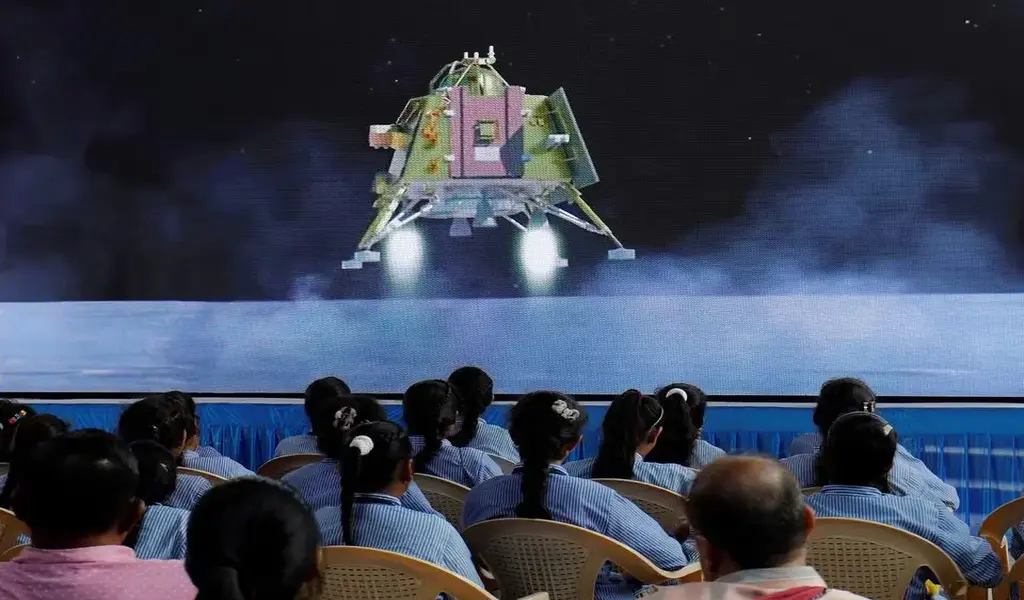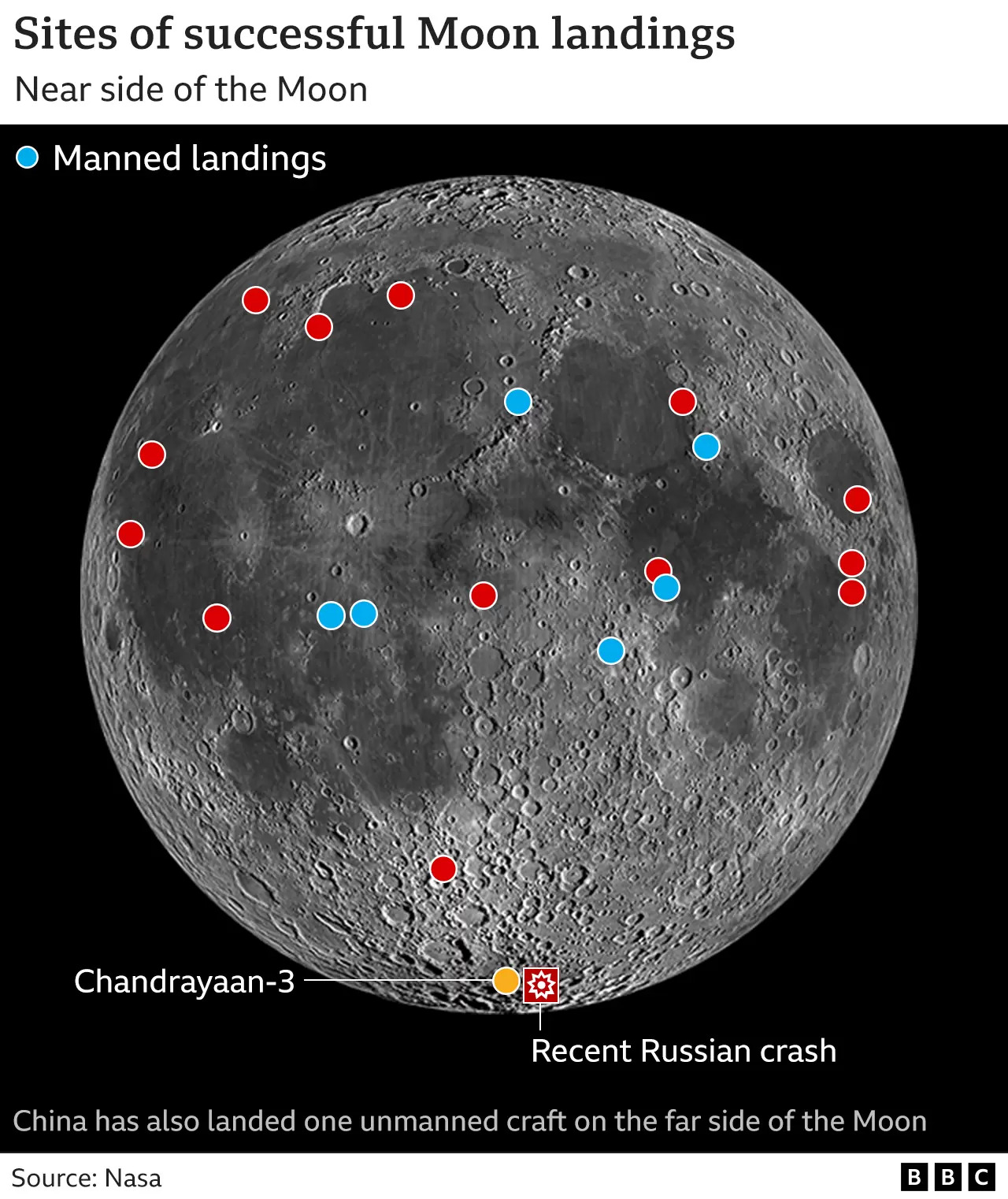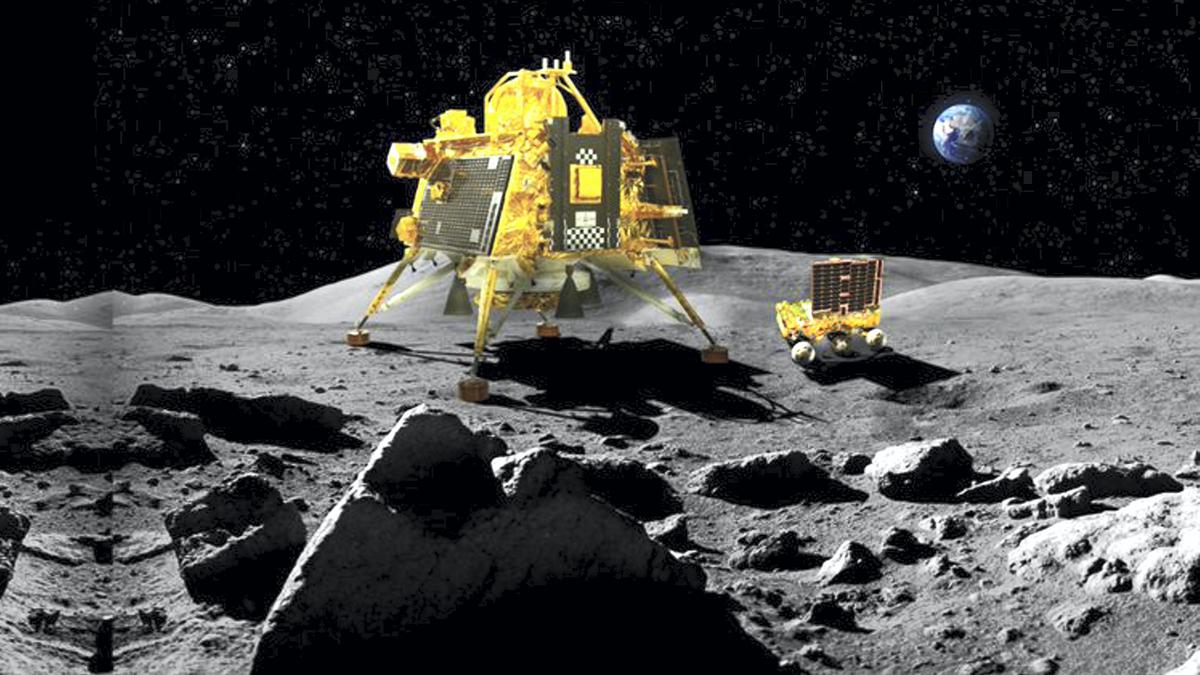News
India’s Chandrayaan-3 Moon Rover Begins Lunar Expedition Following Historic Soft Landing

(CTN NEWS) – On Thursday morning, India’s Chandrayaan-3 moon rover embarked on its mission to explore the lunar landscape. The nation’s space agency conveyed this update through the messaging platform X, previously referred to as Twitter.
Having successfully touched down on the previously uncharted southern pole of the moon the previous evening, the spacecraft achieved this milestone just days after Russia’s Luna-25 mission faced setbacks.
This accomplishment establishes India as the pioneering nation to master such a landing.
The Indian Space Research Organisation (ISRO) announced, “The Ch-3 Rover descended from the Lander, allowing India to take its inaugural steps on the lunar surface!”
ORIGINAL STORY: India’s Chandrayaan-3 Successfully Achieves Historic Soft Landing at Moon’s South Pole
Accomplished within a budget of approximately 6.15 billion Indian rupees ($74.58 million), this marked India’s second endeavor to achieve a lunar landing. A prior mission, Chandrayaan-2, in 2019, effectively positioned an orbiter; however, its lander met with an unfortunate crash.
The term “Chandrayaan” translates to “moon vehicle” in Hindi and Sanskrit.
The alluring aspect of the moon’s rugged southern pole stems from its reservoir of water ice, speculated to hold potential as a source of fuel, oxygen, and drinking water for forthcoming missions. Yet, the challenging topography of this region complicates safe landings.
Across the nation, multitudes tuned in to witness the Wednesday landing, with nearly 7 million individuals exclusively streaming the event on YouTube.
Concurrently, prayers resonated within places of worship, and educational institutions orchestrated live viewings of this spectacle for their students.
Chandrayaan-3 is anticipated to operate effectively for a span of two weeks, during which it will undertake various experiments. These include an analysis of the lunar surface’s mineral composition through a spectrometer.
Pragyaan Rover’s Scientific Instruments and Lunar Exploration Objectives
Pragyaan is equipped with two scientific instruments dedicated to uncovering the lunar surface’s mineral composition and examining the chemical makeup of its soil.
Communication for Pragyaan is exclusively established with the lander, which will then relay gathered information to Chandrayaan-2’s orbiter – still orbiting the Moon – to subsequently transmit data to Earth for analysis.
The Indian Space Research Organisation (ISRO) has clarified that the rover will move at a deliberate pace of 1 centimeter per second. Remarkably, with each movement, it will etch the imprint of ISRO’s logo and emblem from its six wheels onto the lunar terrain.
The timing of the landing coincides with the initiation of a lunar day. Given that a single day on the Moon spans a little over four weeks on Earth, the lander and rover will enjoy 14 days of sunlight to recharge their batteries.
However, their operation will cease once night falls. The prospect of reactivation upon the commencement of the subsequent lunar day remains uncertain.
Beyond Pragyaan’s mission, the lander is equipped with an array of scientific instruments. This comprehensive suite is designed to unveil the activities transpiring both on and beneath the lunar surface.
Chandrayaan-3 Primary Objective
While the Moon is believed to harbor essential minerals, Chandrayaan-3‘s primary objective is to search for water.
Scientists speculate that the expansive craters within the Moon’s southern pole, perennially cast in shadow, potentially contain ice resources that could sustain human presence on the Moon in the future.
Additionally, this water could serve as propellant for spacecraft destined for Mars and other distant celestial destinations.
RELATED CTN NEWS:
Japan Released Treated Fukushima Nuclear Plant Water Into Pacific Ocean, Sparking Controversy
Clash of Republicans: Winners And Losers Emerged In Rowdy First 2024 Presidential Debate
Fatal Collapse: Construction Tragedy Claims Lives Of 26 Workers in Mizoram, India






























